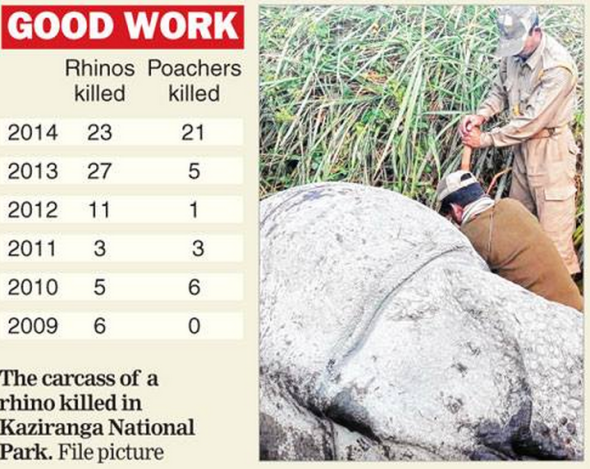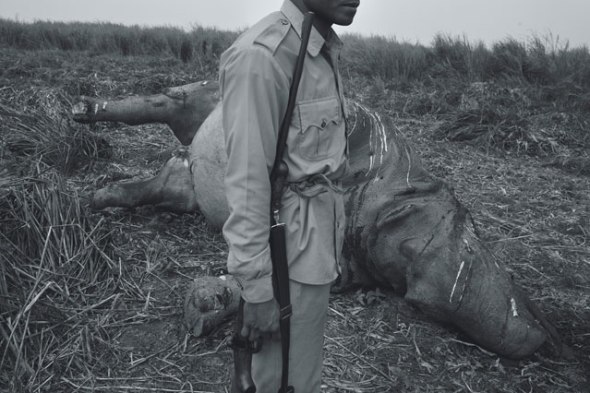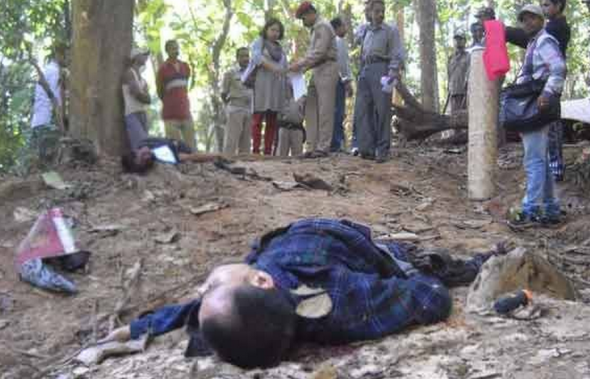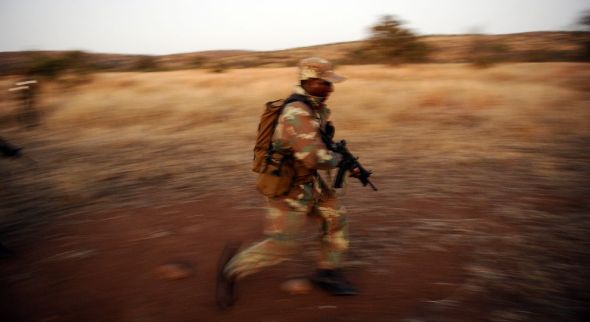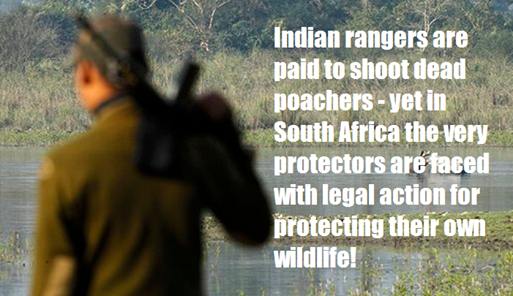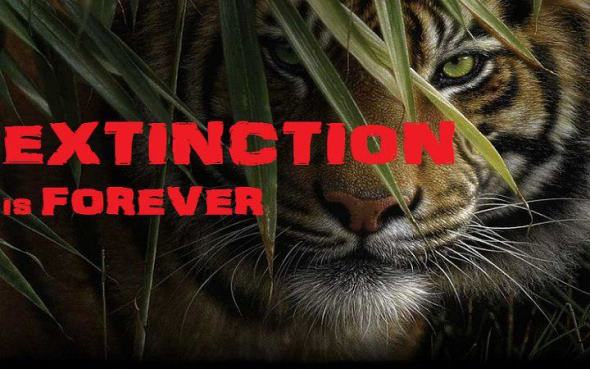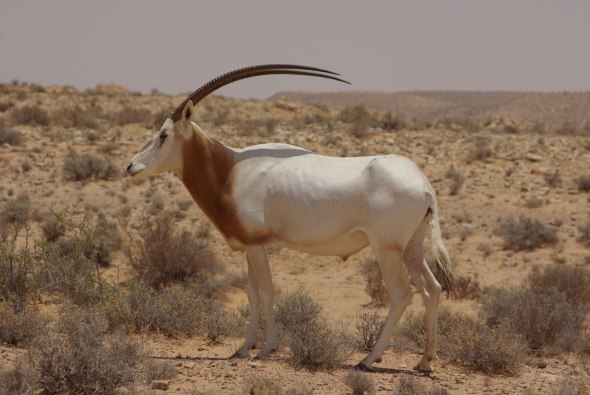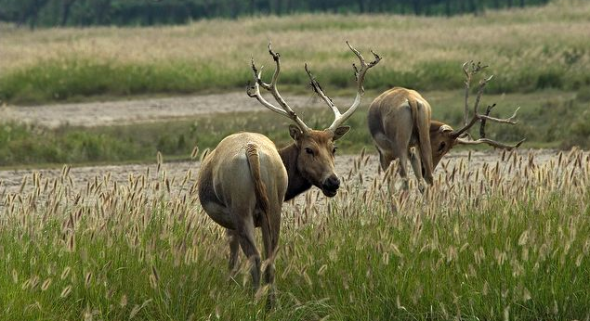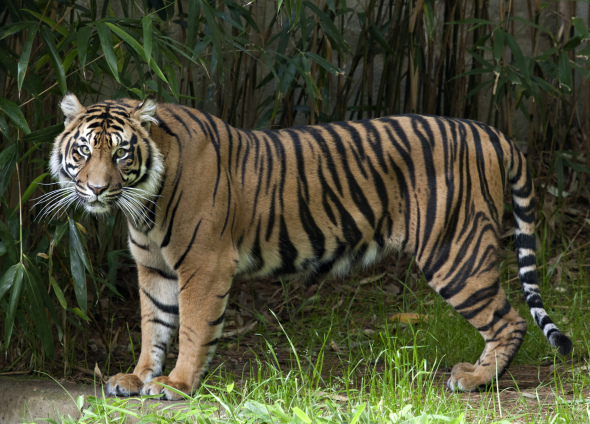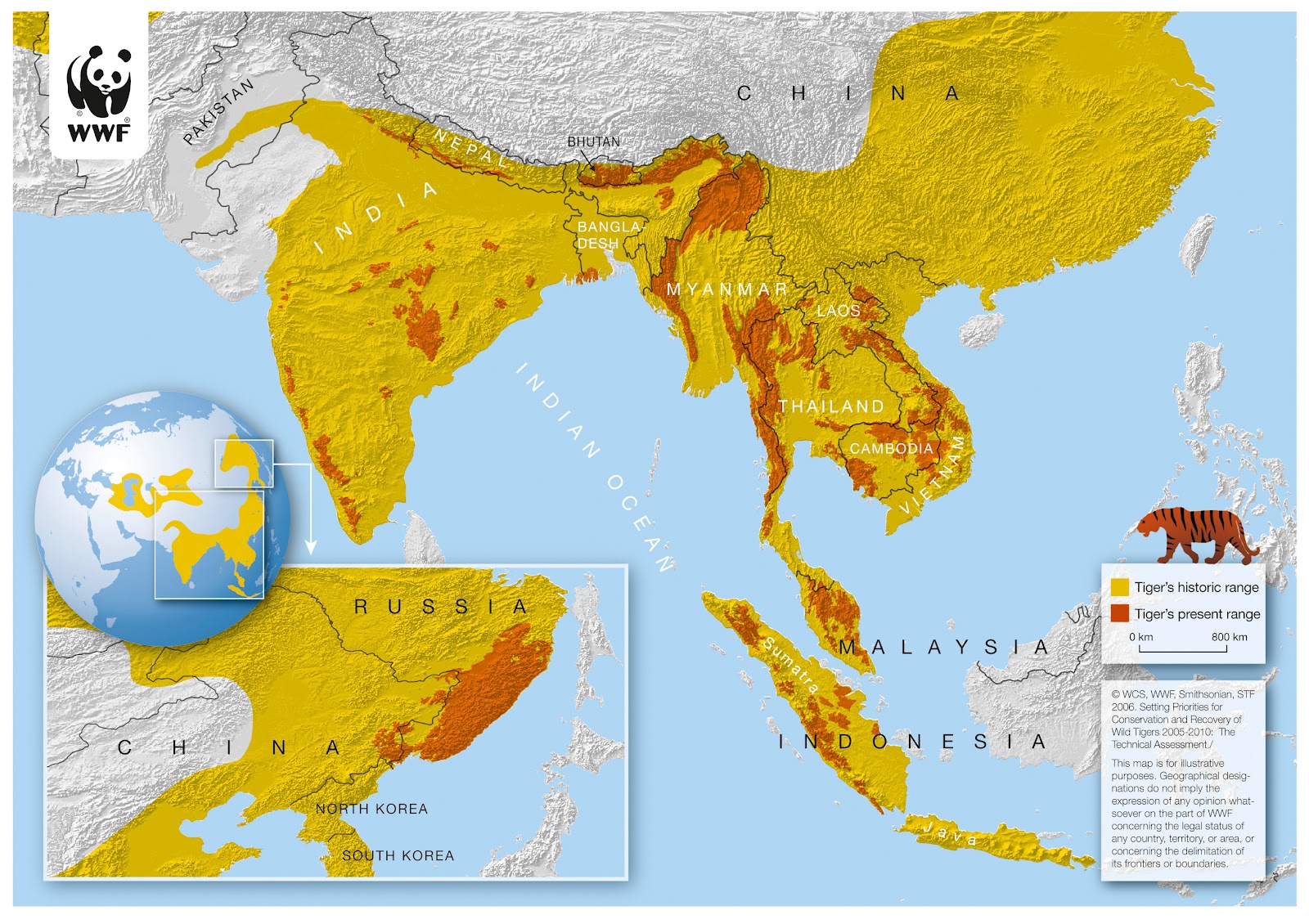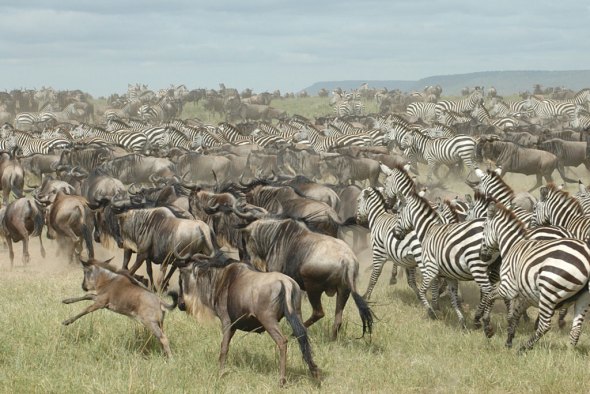Licence to Kill - Welcome to the Future of Conservation.
Rhino and elephant poaching on the African continent has again raged out of control this year, and as we near the end of 2014 statistical data shows that near to 1200 rhinoceros have been poached for fake medicine and thousands more elephants killed for meat and their ivory. Its expected by the end of 2014 we will have lost some 1400 rhino. Data models have also shown that by the end of 2015 we look set to loose a staggering 2,009 rhinos with thousands more elephants too.
The poaching pandemic within South Africa custodian to the worlds largest populations of Rhinoceros isn’t decreasing, nor are any forms of anti poaching actively working to at least stem the poaching rate. From 2010 we lost 333 rhinoceros of which some 165 people were arrested. 2011 poaching and arrest statistics increased again that saw some 448 rhino butchered and 282 poachers arrested. From 2012 poaching statistics shot up yet again seeing some 668 rhinoceros killed and 297 people suspected or known to have poached arrested. 2013 over 1004 rhino were slaughtered of which a further 298 people suspected of poaching were arrested.
Statistics for 2014 to date place arrest rates at some 344 with some 1100 rhinoceros bludgeoned to death to provide the Asian medicine market with fake medicinal cures and to show wealth among the rich within the countries of Viet Nam, Laos, China and Thailand.
India has had its fair share of poaching too although poachers do play Russian roulette when they wish to poach rhinos, tigers or elephants within the Indian national parks. Statistics show some 37 one horned rhinoceros poached since the start of the year which is a little over last years poaching records. Arrest rates are up that see some 45 people arrested. Deaths of poachers has increased from last years statistics that was 5 poachers killed compared to this years kill rate that stands at 27 poachers killed within the national parks of India.
Please note the Rhino poaching stats for 2014 are incorrect - to date over 30 Rhinos have since been poached.
While arrest rates are increasing within South Africa [see pic below] with regards to rhino poaching very few poachers are actually brought before the courts with many given bail just to commit the same offence again or flee back over the border from which they remain untouchable just to re-offend again.
Back in early December 2014 International Animal Rescue Foundation Africa and India launched a public debate focusing on [Shoot to Kill] - a method of wildlife preservation now active in the majority of wildlife parks in India that sends a clear and precise message to poachers - yet within South Africa is barely practiced as rangers and farm security either face red tape court and legal action or haven’t even the weapons to shoot to defend or kill poachers. Red tape or legal action is not seen within the states of India where a one shot to kill poachers has been authorized.
Kaziranga National Park hosts plenty of tigers being the worlds highest density and fleets of endangered one-horned rhinos. (More than two-thirds of the remaining population.) And, since 2010 a take-no-prisoners anti-poaching policy that allows rangers to shoot on sight. Welcome to the future of conservation.
Indian wildlife poacher Naren Pegu briefly became famous back in 2010 with regards to the Indian shoot to kill policy. Poacher Naren Pegu was shot dead on the morning of December 13th 2010 after anti poachers could take no more. Naren Pegu had decimated many rhino and tiger populations making thousands from animals parts and providing an illicit trade to South East Asia.
Time to Get Tough on Poaching;
The fall of India’s most notorious poacher.
Pegu was a member of the Mishing tribe, one of Assam’s many indigenous groups that, like their equivalents everywhere, have lost land and livelihoods. Mishing villages line the park boundary, their inhabitants pressed against it like kids at a candy-store window. If you can’t pay $50 for a jeep safari, you can’t get inside. Growing up here, Pegu learned to sneak past the border; he knew the park like his own backyard. He’d come and go undetected by the forest guards—India’s version of wildlife rangers. Poaching ran in Pegu’s family; his father was a poacher before him. In all due respects Pegu was “allegedly” poaching to provide a stable income for his family of which poachers within Africa of which some opportunistic poachers are merely doing the same. If countries such as Viet Nam, Laos and China were not using tiger, rhino and other animal parts for trade its most likely that Pegu and his family members would either have to resort to other violent crime to feed and provide income to family members or die from extreme poverty.
Most Mishing involved in the trade are content to serve as illegal guides for the bigger regional guns—sharpshooters and brokers from Nagaland—whom they lead in and out of the vast park, taking a small cut. But Naren Pegu was enterprising. He taught himself the rules of the trade, cutting deals in seedy hotels. Learned where to get black-market .303 rifles from the separatists who control the Nagaland hills. He thought big. Typically, poachers blow any money they come into, but not Pegu: he’d saved enough to invest in three vehicles, a big house, even a plot of land, where he was starting his own tea garden in some sort of psychological stab at legitimacy. While Pegu was bringing down more than $20,000 per year through poaching, his Mishing relations scrabbled to earn $200 a year in the rice paddies.
Pegu had every right to feel cocky as he and an accomplice slipped into Kaziranga on the evening of December 12, waiting out the night munching on rotis and precooked rice; a fire would have given them away. At dawn, rhinos scatter across Kaziranga to feed on the rich grasslands, and Pegu was ready. He came upon a mother rhino feeding with her calf. Got out his rifle. Shooting a rhino is like shooting a barn: when you take aim, they stop and stare, deciding whether to charge. Pegu shot the mother dead, hacked off her horn, and left the baby standing there. The park border, his village, and a payday in Nagaland were not far away.
Pegu should have been home free. He knew the landscape, and Kaziranga employs only about 500 forest guards to cover more than 300 square miles of tall grass and jungle—on foot. What were their chances of finding him? Yet, unbeknownst to Pegu, before he even fired his shot three forest guards had entered the area, searching for him. As soon as he fired, they closed on the spot. Unlike most guards in most parks in India, they were armed. And they had license to kill.
Pegu saw the guards first and opened fire. Missed. The guards took cover. As the shooting continued, one guard calmly raised his antique .303 Lee Enfield rifle to his shoulder, lined up Pegu in his sights, and blew his head off.
Pegu’s accomplice was shot in the hip by another guard. An hour later, he, too, had died “from his injuries,” according to the park’s report. Pictures from that day show the two men lying on the forest floor. The accomplice has dried black blood around his eyes, nose, and ears. Pegu’s head is split open like a watermelon.
The photography we have on Pegu and his accomplice is to graphic to include within this article however one can Google it by searching in the Punjabi language.
Licence to Kill - Smack in the Face to South Africans…
Indian rangers and forestry guards are paid an extra allowance should they locate and shoot dead poachers. While some may not believe this is actually helping to deter poachers - it actually is. India has the lowest rhino poaching rate compared with Africa of which to date over 1100 South African rhinos have been poached dead this year alone [2014]. 91.74% of voters agreed this year that a shoot to kill policy should be drawn up within South Africa. 6.46% of people stated a shoot to kill policy should not be given to rangers while 1.73% stated they were unsure. Either way this is desperate times and desperate times calls for some serious defensive measures. No mater what legislation the South African government is bringing in - its not working, This year alone as explained over one thousand rhinos have been bludgeoned to death. Something has to give and now we know poachers are feeling somewhat afraid to enter Indian National Parks the same sense of fear must apply to African poachers that wish to rid Africa of rhinos and other large fauna.
India is quite a poor country however they take wildlife crime as serious. Back in 2012 In addition, the government in Maharashtra reserved a fund of 5 million rupees ($90,000), to be used to reward people who can give information about alleged poachers. This year alone within rhino and tiger reserves alone we have seen an increase of poachers being shot dead and government handing out cash rewards. We must also reiterate that India has stated no legal action will be brought against those whom kill poachers. So why the same practice is not being adopted within South Africa is quite baffling. Are certain government ministers in on the poaching?
Indian forestry teams mostly now print on how they have shot dead poachers - rather than arrest them. Back in November 2014 yet another shoot out entailed the seventh for that month that left two rhino poachers dead and yet another message sent to the poaching community that wildlife crime will not be tolerated. Sadly since November to December we’ve lost a further seven rhinos however a four poachers out of them seven incidents were shot dead.
The two poachers were killed in an encounter with forest guards [picture below] in the Kaziranga National Park, famed for its one-horned rhinoceros. Acting on a tip-off, forest guards spotted the duo in a forest area between Diffloo and Borbhag camp in Burapahar range in Nagaon district and an encounter ensued in which the poachers were killed, a senior forest official said. The forest guards also recovered a .303 rifle, eight live cartridges, seven empty cartridges, some foodstuff and a mobile handset. The slain poachers have since been identified and their bodies have been sent for postmortem. A total of 14 poachers have been killed this year in Kaziranga National Park.
Poachers had arrived into the park in search of the endangered one horned Rhinoceros.
While some may agree hunting the poachers is extreme, its unfortunately the only [extreme] method of preserving our wildlife. Human Rights Organisations have yet to really speak out on the issue however are monitoring the increasing death rate of poachers within India. Their argument is poachers are trying to support their families financially.
Tiger and rhino populations within India are at their lowest though and while still extant their presence brings in revenue from tourism which helps to secure parks, pay wages, and decrease poverty within areas that border the main rhino and tiger parks. So in all the government is trying its hardest not only to protect its wildlife but also impoverished communities. Taking Indian wildlife poacher Naren Pegu case to hand too - while some journalists have stated he was only poaching to secure his families welfare, the vast majority of money was being used to fund his lavish lifestyle. While Naren Pegu was funding his own way of life, meanwhile on the border of Kruger National Park, South Africa “poachers that derive from poverty stricken Mozambique” are living the life of Riley. Poaching African rhino and living off the funding that is generated from the sales of the cut down horn. It truly is disgusting and a complete smack in the face to all Africans.
In Western Mozambique a now not so tiny nor impoverished village named as Kabok is now known as Mozambique’s millionaires rhino row. Poverty stricken individuals that are [untouchable] have for the past several years been wandering over the non-secure South African-Mozambique border taking down rhinoceros left right and center. While many face arrest and in some rare cases have been short dead [when a shoot out occurs] the village is growing and so too is its greed for Kruger’s Rhino horn and the wealth such horn trade brings in. Mansions and new vehicles can clearly be seen along the border to the disgust of anti poaching units and rangers alike.
In neighboring South Africa, these mansions would be called matchboxes. Most are flat-roofed, single-storeyed structures. Some look similar to RDP houses [public housing]. But what separates these homes from the usual reed houses in Kabok is that they are made from brick.
This part of Mozambique is dirt poor and the remnants of the civil war scar the landscape and the psyche of the people. War amputees wander the dirt roads. The new Kabok has been built on the horns of the hundreds of rhinos slaughtered just kilometres away in Kruger National Park. It is not alone – there are other towns spread along the border that lines Kruger National Park. They are the staging posts for rhino poachers.
There was a time when the bordering Corumane Dam supplied the community with its main source of income – fishing. Now, under the silvery full moon, fishermen ferry poachers across the lake, rowing them up the Sabie River and dropping them close to the Kruger fence. In South Africa Kabok has long had the reputation of being a haven for robbers and hijackers who take refuge across the border. Rhino economics filters through the town, the anti-poaching officer explains. Everyone gets a piece of the pie, builders are paid to construct those houses. Spaza shops have sprung up, some built with rhino money. The funeral industry, it appears, gets its cut too. Mozambique has in the past year acknowledged rhino poaching as being a crime and is actively helping to reduce communities along the border of the Kruger National Park. Sadly while the Mozambique government have acknowledged rhino poaching its still seen as a misdemeanor offence rather than a punishable offence. In all this is a smack in the face to all South Africans and our wildlife too.
Rules of Engagement - African Rangers can Face Legal Action;
Member of the SANDF Anti Poaching Unit patrolling the Kruger National Park
While the Indian Government has actively authorized in tiger and rhino reserves a shoot to kill policy of which forest guards are immune from legal action, in South Africa the rules of engagement are somewhat more cloudy of which there have been few cases where rangers and Anti Poaching Operatives have faced the wrath of their own government taking legal action against them for protecting their own wildlife. Animal rights activists must also remember when screaming and shouting at conservation units to shoot poachers - there are rules that must be obeyed at all times. These very rules are what International Animal Rescue Foundation Africa are now going to challenge in the wake of last months rhino poaching statistics and intelligence that has pinpointed South Africa as being the next country to be hit hard by elephant poachers. Activists must also remember that the vast majority of South African Anti Poaching Units are just that and not members of SANDF - South African National Defense Force that have the capability and authorization to take a shot at poachers and are 99.9% of the time armed while many Anti Poaching Units that consist of volunteers and/or rangers are lacking basic equipment or in some cases one unit only has one shooter. Least forgetting do not have the authorization to just kill poachers.
Unlike soldiers in combat, rangers pursue criminals, not enemy combatants. Rangers enforce national laws and work under specified rules, and in South Africa and elsewhere, they’re permitted to fire only in self-defense. That need for restraint can be stressful, states the now retired Major Jooste. “Here’s this [ranger], tracking poachers in 45 degrees [Celsius, or 113 degrees Fahrenheit] for many days. He gets a sighting, but he cannot shoot at the person. He must now stalk the person.” Yet the thick bush hinders tracking. When the ranger finally finds his quarry, “then he must challenge the poacher. Only when that person picks up his rifle may he defend himself. And that is taxing.”
According to Jooste, in 2013 SANParks rangers engaged in 65 firefights, but they recorded 108 sightings of poachers. “Because we’re law abiding, they get away. Because they run away into the bush, [the poachers] have the advantage.”
In addition, when a ranger in South Africa kills a poacher, the ensuing police investigation puts pressure on the ranger and his or her family—even if the case is dismissed. “You’re on the defensive all along,” Jooste says. “You know that when you sight them, in a split second you’ll have to make a decision whether to defend yourself, and there will be consequences.”
The consequences can range from legal action from the poachers themselves or from families against rangers of which is time consuming, taxing on the already impoverished country and sees rangers time taken up in courts rather than where they should be operating - in the fields.
Murder - Rangers risk their lives in the fields for pittance;
“Many who become game rangers go into it knowing that the position goes with many dangers of wild animals, dehydration, irritating insects, never mind the poachers—and most are the type of tough personality that can handle the rigors of the job,” says Kevin Bewick, head of the Anti-Poaching Intelligence Group of Southern Africa.
A recent ranger recruitment drive for Virunga yielded 1,800 applicants for 112 spots, despite the high death toll in the park during the past decade. For many, the attraction is the promise of a job, but that’s not the only, or even the main, factor.

Picture above - KWS monument in honor of Kenyan Wildlife Rangers killed on active duty.
“Being a ranger was not a choice but a calling,” says Stephen Midzi, whose base is Shangoni Post in Kruger. “I was born for this, so had to fulfill what has already been written in my book of life.” Zakouma’s Ndotoingar says simply, “I’m proud of my work.” “Not a single guy has quit,” SANParks’ Jooste notes, adding that without the rangers like Midzi, poaching statistics would be a lot worse. “Look what would happen if we weren’t here.”
Every four days in Africa and around the world a ranger or Anti Poaching Operative is killed in their line of work. Many either face a quick death, are killed by contract shooters or tortured to death. The risks are endless yet wildlife security forces still risk their lives despite pittance [very little monetary income].
As explained International Animal Rescue Foundation Africa is challenging the South African government on shooting to defend of which the organisation wants a clear and precise “shoot to kill” law introduced for wildlife rangers and Anti Poachers not just SANDF. Furthermore I.A.R.F.A. calls on the government to not only authorize rangers to adopt this method of conservation but implement a NO conviction No Legal action clause within contract. Training and more equipment to be supplied to rangers too and rangers with no firearms to be equipped without delay.
International Animal Rescue Foundation Africa doesn’t stand alone either when it comes to such licence to kill policy. Over 90% of South Africans questioned agreed that a shoot to kill policy must be enforced to send a clear and precise message to poachers and king-pins that poaching will not be tolerated within the country. Should the organisation win it could see rangers in other countries authorized a licence to kill. Kenya is one such country on the continent of which KWS - [Kenyan Wildlife Service rangers] not only face death from poachers but are also heavily outnumbered by poachers that are slaughtering rhino and elephants.
The Peoples Verdict - Licence to Kill;
Back in November International Animal Rescue Foundation Africa and India started a public debate with regards to the shoot to kill policy. The debate has thus far seen quite a prolific response from which can be read below. Quite astonishingly we counted a mere dozen or more responses that were against the shoot to kill policy, whereas over 2,000 responses based from our Indian and South African debates called for a shoot to kill policy to be implemented.
Below is a handful of extracted responses for you all to read. You can join the debate by logging onto Facebook and clicking the link below. Alternatively you vote via our poll that will be the second third poll this year of which we will collect all results and begin passing these on to the government and ministries throughout Africa.
Roxanne Cochran stated - I am from South Africa. I agree fully with this notion. If they’re willing to take a life, they should be prepared to be shot down dead too. It’s very sad to see that most rhinos here have had there horns cut down for protection. It’s not natural and it breaks my heart that we have to go to such extremes to protect these beautiful creatures.
Gavin Hastings stated - Hello all, I am a serving soldier of the SANDF; I am just back from my 3rd deployment of 6 months from the Kruger. The problem id like to address is not man power or resources, it is the government of the country of South Africa and Mozambique who are now collaborating in the elimination of the species of rhino thanks to the bureaucratic impasse given to poachers of rhinos. As a soldier I am now “arresting” poachers. It is very difficult to maintain success and morale if you capture a person and he is extradited to re-do his killing the next week. I ask the international community to pressure my government. We need legislation to properly take care of the species survival and give the killers their fair due.
George Chimbai stated - In my country Malawi rhinos were once extincted and were re-introduced in the 1990s with rhinos from South Africa, without that Malawi wouldn’t have been boasting of having the BIG FIVE in its national parks and game reserves. South Africa as a supplier of endangered species to countries where they’re facing extinction I welcome and support the SHOOT TO KILL POLICY of these poachers.
Leisa Cope stated- I agree with shoot to kill only because I don’t see any other option. The consequences of killing animals not only brutally but into extinction needs to be this intense to at least make poachers think twice about what they are doing. If poachers choose to risk their lives then this is their own decision. How sad it is when it comes to this form of action.
Berdine Helderberg stated - Definitely shoot to kill - although, a warning shot might be needed first? (Legal wise..) Poachers know what they are doing, they know it is wrong and because they know they are untouchable, they continue committing these horrible horrible crimes. They simply do not care about the intense suffering of the animals and sometimes the babies too. If you can do it to a defenseless, helpless animal, you will do it to a human being too. Lastly, they will shoot any person that comes in their way, not thinking twice.
Kerryn Hay stated - Shoot to kill definitely. I have no sympathy for poachers even if they are disadvantaged/uneducated and trying to put food on table as some of you have argued - they are making the decision to brutally murder helpless animals and every action has consequences. Kill these criminals! why are we even considering giving them rights when animals have none. If it’s working in India then we must try it because nothing South Africa has done has helped thus far and time is running out while we debate the rights of ruthless criminals! I would prefer to see them die as slowly and painfully as the animals that they murder but let’s shoot to kill and make an example of them!
Heather Smith stated - These poachers are killing innocent animals, so why shouldn’t they expect the same treatment. Rangers are shooting to save these animals lives, poachers are shooting purely for money. You have my support all the way. Shoot to kill!!! Just as the poachers do.
Debbie Olivier stated - South Africa wake up! Allow our rangers to shoot to kill - no questions asked. We have entrusted our wildlife to them - we need to trust them with this too as they are well trained.
Donny De Mars stated - Why shouldn’t there be a shoot to kill law? I mean what makes you think these poachers would not do the same for any unarmed ranger who tries to bring them in. They are no better than drug traffickers and deserve even more severe punishment! A life for a life.
Robert Cates stated - I think a shoot to kill policy/law should be enacted not only to stop dead the ones doing it now, but also to SHOW/deter others thinking about doing it. I don’t think it should be even controlled by the police department… I think it should be an open season sort of policy… that should really put the scare in them.
Whoozie Blue Marlene stated - If you were running away from a bank having stolen a rare pink diamond the. The police would shoot you down dead. Are our rhinos not rare enough, aren’t they our beautiful pink diamonds?. Telling a poacher to stop or else does not work and if it does they are back in business chop chop. If this was installed it would work simply because no one wants to die. God left these animals in our care, so far the care has not been good enough I’m afraid. Protect our Rhino please because enough is enough !!
James Kipterem stated - I agree! Because rangers too are being targeted by these evil minded poachers. Even poachers, they have the same thought of “shoot to kill” whenever they meet rangers. So shoot to kill is the only remedy to a poacher, because, why break the law which we were passing together? that, ‘it is illegal to kill wild animals’. Instead of defending the law you break it. That is very bad. Always law defenders are more than breakers.
Jannette Slabbert stated - Any bad behavior must have real and costly consequences or you will never change it prison is obviously not enough of a penalty so if loosing your life is the price then so be it. It has proven effective in India then I say put the policy in SA too.
Russell Gordon stated - Future generation will blame us for not doing enough to have prevented the total extinction of the Rhino. So to address this now to preserve the Rhino for our future generations poachers and their ring leaders need to feel pain and by that I mean the ultimate sentence, the death penalty.
Laurian Knop stated - I vote shoot to kill poachers in self defense. Poachers are always armed and chose to kill the helpless and innocent. How many rangers have lost their lives to poachers? Self defense is not murder. Protecting those unable to defend themselves is not a criminal offense. Poachers are a scourge that need to be wiped out as they facilitate a bigger epidemic of terrorism, trafficking of drugs and children and general corruption. Why is this even being second-guessed? Do those opposed have something to lose should it be implemented?
Chris Switzer stated - I believe the continuity of a species, far outweighs any issues that might be brought up with regard to a shoot to kill policy. Poaching an endangered species, many of which on the brink of extinction, should be punishable by death.
Annmarie Botelho stated - I think that south Africa should have shoot to kill laws… if it keeps going the way it is we are going to lose are elephants and rhino …. it’s such a cruel trade and there really isn’t any need for it.
Gillian Curley stated - I don’t like the shoot to kill as the poachers are just doing what they are told to do and feed their families BUT something has to be done and if we can’t get the leaders and the buyers then yes sadly I agree to shoot to kill.
Marisol Davila stated - A policy of shoot to kill poachers will be a deterrent for the poaching business. Due to lax policies wildlife numbers are in the brink of extinction. Many economies depend on the tourism that wildlife attracts. Therefore, a harsh policy against poachers and their customers is key if any country wants to strengthen it’s economic survival in the long run. The message need to be loud and clear zero tolerance to poaching, no bits or ifs allow.
To take part in the debate that International Animal Rescue Foundation Africa is running you can comment by clicking here alternatively you can also hit the poll button below and tell us what you want. Please be aware that the poll expires one week from the date of this article of which we will not run another poll.
BEFORE voting please view the video below.
Conclusion;
International Animal Rescue Foundation Africa last year created data models that indicated their worst fears regarding wildlife poaching based on poaching deaths, natural deaths, gestation, deaths of unborn fetus, decreased populations of other larger fauna such as elephants and more. Model data has already shown that South Africa’s poaching rate will continue to increase and has provided very worrying numbers of final statistics supported by defense organisations working hard to stem the flow of poaching.
While none of us wants to see, read or hear of any living creature death - We must send a more stronger and decisive message into Asia and African poaching communities, and while tackling poaching is one thing we’ve also poverty to engage that will take the temptation away from individual opportunistic poachers that kill to fend for their families. Its these very communities that Asian traffickers and king-pins target as they know they are easy prey.
Look at it simply like this. If your living with no food, no electricity, no sanitation and require health support, are barely feeding your family or even yourself and living within a country that is doing little to decrease poverty then you will snap the chance up at anyone given moment to make money. Conservation organisations and leaders of Africa and world leaders must do more to decrease poverty around wildlife parks.
Failing this Data Models have shown that the white rhino will be verging near endangerment by 2017 of which the black rhino could be extinct in under five years within the wild [despite populations increasing]. Furthermore while the continent of Africa is still custodian to thousands of elephants, elephant populations are becoming more fragmented. Yesterday I.A.R.F.A reported a massive decline in South Sudan elephant populations that now stand at some 2,500. Giraffe populations are now at some 40,000 for the entire continent of Africa.
Bottom line is should Africa lose vast swathes of her wildlife then tourism will be affected too. Tourism brings in billions for the entire continent of Africa of which Africa’s wildlife is seen as the number one tourist attraction. A large number of countries depend on tourism for the economic growth. A recent study done for DFID concluded: “While poor countries only command a minority share of the international tourism market, tourism can make a significant contribution to their economies.
Eighty percent of the world’s poor (below US$1 a day) live in 12 countries. In 11 of these, tourism is significant and/or growing. Of the 100 or so poorest countries, tourism is significant (accounting for over 2% of GDP or 5% of exports) in almost half the low income countries and almost all the lower-middle income countries.” Using these same criteria and 1996 data, tourism is “significant” in an impressive number of African countries: Benin, Botswana, Burkina Faso, Cape Verde, Comoros, Djibouti, Eritrea, Ethiopia, Gambia, Ghana, Kenya, Madagascar, Mauritius, Namibia, Niger, Senegal, Sao Tome & Principe, Seychelles, Sierra Leone, South Africa, Swaziland, Tanzania, Togo, Uganda, Zimbabwe. Zambia and Mali just missed the cutoff in 1996.
According to the World Tourism Organization (WTO), Africa as a whole attracts just fewer than 4% of total world tourists and accounted for 2.0% of international tourism receipts in 1997. Of the Sub-Saharan countries, only South Africa is listed in the top forty tourism destinations worldwide, where it was 26th in 1997. The WTO calculated [1996] that Africa had just over 3% of world accommodation capacity (796,000 beds). The Africa region showed the strongest expansion in arrivals of any world region in 1997, up 8.1% over 1996. Furthermore, during the 1988-97 decade, Africa had an average annual growth of 7.2% in visitor arrivals, only slightly lower than East Asia/Pacific, which had the highest growth rate of all regions though from a much higher base than Africa. The average annual growth rate for tourist arrivals worldwide has averaged 5.0% for the past decade.
However - the number of tourists now arriving in SSA has grown over 300% since 1990, with 2012 marking a high of 33.8 million tourists who visited the region. Income generated from tourism has also climbed: Receipts from hotels, tours and other attractions in 2012 amounted to over US$36 billion and directly contributed just over 2.8% to the region’s GDP, according to the report issued by the World Bank back in 2013.
Wild animals are probably one of the first things people think of when asked about Africa. Seeing all the documentaries on television, we can only wonder and watch in awe as these mighty creatures roam the plains and jungles. Many are now protected in reserves and tourists can venture out on varying safaris to watch them in their nature habitats. What an incredible experience for both the amateur and professional photographer! Zambia holds the most natural of parks because the area is not accessible between November and March due to the waterways. Since the animals, plants, birds, and other natural elements are left alone, the area is truly spectacular when viewed each year after this rejuvenation period.
Safari rates as number four on many tour guide questionnaires when asking tourists why they wish to visit Africa. So in all if we continue to see such a vast decline in wildlife and lack of hard core enforcement we’ll most certainly see a copious decline in tourism revenue. I don’t need to explain what that will spell either.
International Animal Rescue Foundation has been challenged by only Humans Rights Christian Organisation of which stated we should not lobby or enforce a licence to kill poachers. All that can be said to the Human Rights players is that when there are no animals left, and revenue is seen as shrinking because of this then the Human Rights organisations can visit Africa and tackle more violent crime, lack of any employment, rape, murder, and more.
The time to act is now and not tomorrow. Stand by International Animal Rescue Foundation and help us enforce a shoot to kill policy within South Africa, Kenya and Tanzania.
Thanks
Board of Directors for External Affairs - Ead
Chief Executive Officer of Environmental Projects Africa - Michael L. Rooste
Chief Environmental Officer & CEO Dr Jose C Depre
Chief Environmental Registrar Europa - J. F. Williamson
External Affairs and Lead Investigation Officer - Vincent Van der spuy
externalaffairs@international-animalrescue-foundation.org.uk
You can help us by donating, to donate click the picture below that will take you to our donation application on Facebook. Alternatively you can donate to our communications site listed hereto at
www.international-animalrescue-foundation.org.uk
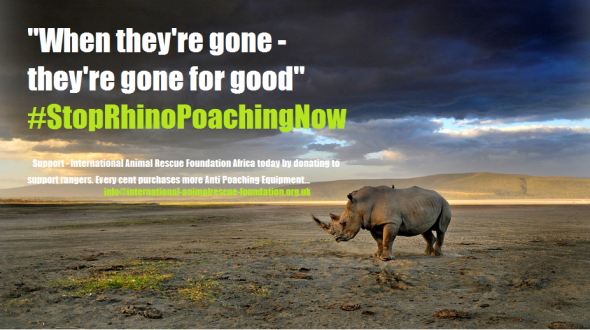
Can hunting lead to Species Extinction?
Its a topic that we see spoken about within many animal rights and conservation debate forums, can hunting lead to species extinction? The answer is yes hunting can if not monitored lead directly to species extinction.
The many arguments that quote Cites can help stop species from extinction is not really valid. Cites - Convention on International Trade of Endangered Species does not cover the entire globe.
To date there are a total of one hundred and sixty member states (2013) that are bound by the Cites agreement. So in not so many words hunting can be (restricted) however this doesn’t mean that the member states have to agree with what Cites and other member states call for. Cites was established back in the early 1970’s of which has seen many species of animals and plants preserved. One must remember though that hunting is not the real threat to animals, humans are via over populating that leads to mass habitat fragmentation in many ways. Increased farming, urbanization and depletion of natural resources such as wood have had quite a profound affect to many species of plant and animal.
Case Study #1
Identified in 1826 by Cretzschmar - Oryx dammah.
(Extinct within the wild)..
O. dammah
The Oryx dammah is only extinct within the wild. However, 14,636 km away the Oryx dammah is not extinct on US ranches?, 14,636 km on a private farm in Texas these adorable mammals are trophy hunted. One would think that the farm would actually create a captive breeding program to reintroduce species of O. dammah back in the wild of Northern Africa.
Back in the 1960’s a global captive breeding program was launched when it was finally documented that hunters had literally over hunted the species into extinction. At the same time the African black and white Rhino was bordering extinction however won a reprieve, sadly even they are no longer safe bordering tipping point.
In 2005 a captive breeding assessment showed around some 1,500 individuals of O. dammah within captivity. From 2000-2007 the species was formally identified as completely extinct within the wild. In Chad and Niger it was estimated that a mere five hundred individuals were known to still be living within the wild from 1985. Scimitar horned oryx (common name) is regionally extinct within Algeria, Burkina Faso, Chad, Egypt, Libya, Mali, Mauritania, Morocco, Niger, Nigeria, Senegal, Sudan, Tunisia and the Western Sahara.
Hunters can agree or disagree. The evidence is clear today as it was back in the mid-1980’s when the species was formally assessed as (critically endangered).. Hunters are responsible for pushing species of mammal whether it be the Lion or the O. dammah into extinction. What really concerns International Animal Rescue Foundation’s conservation team is that environmental departments and enforcement agencies were fully aware many species of animals are threatened from human selfishness. Cites was not aware as the treaty was only drawn into practice back in the early 1970’s. Had the Convention on International Trade of Endangered Species that hosts some 160 member states been made aware of the plight of the O. dammah its quite possible they’d still be living within the wild.
Environmental departments on the African continent knew the O. dammah populations were being seriously depleted. So did international agencies. The O. dammah could have been taken into a secure captive breeding program way sooner than the 1960’s and/or protective secure parks established and manned to secure the species within the wild.
Over-hunting and habitat loss, including competition with domestic livestock, have been reported as the main reasons for the extinction of the wild population of Scimitar-horned oryx. Hunters still to this very day propagate unproven data stating the O. dammah is still pretty much alive within the wild. You’ll find that most of these hunters are either cattle ranchers that have never visited our Mama Africa or keyboard hunters that take facts from various sources outdated or unproven.
International Animal Rescue Foundation - Africa located seven ranches inside of the United States that allows tropical hunting of the O. dammah. One ranch we contacted we asked if they would be willing to ship out to Africa a dozen O. dammah for breeding yet we was informed the cattle were only hunted for trophies. Even with money talking not one ranch was willing to comply. (Please note we do not own a captive breeding facility)…
Cattle Ranches in Texas sell for hunting O. dammah Yearling Heifer/Bull priced at $800.00USD, cows as $1,100.00USD and bulls up to 36 inches at $1,300.00USD.. All included - to hunt sets you back a staggering $3,250.00.
Regardless of what hunters state there has been no definite evidence of the survival of this species in the wild for more than 15 years. Yet speak to a few Texan hunters and they’ll inform you otherwise. Sporadic reports of animals sighted in Niger and Chad have never been substantiated, despite extensive surveys dedicated to detection of Sahelo-Saharan antelopes carried out in Chad and Niger in 2001-2004.
It is sadly a fact that hunting whether it be trophy hunting or hunting for bush-meat has contributed to the extinction of this species within the wild. Any hunter that states no species of animal has ever been pushed to extinction within the past twenty years other than the Dodo and Tasmanian Tiger are bare faced uneducated liars that lack any form of conservationism education as their only type of conservation is keeping numbers down commonly known as “hunting” - Its hardly conserving any form of animal.
Case Study #2
Identified in 1866 by Milne and Edwards - Elaphurus davidianus
(Extinct within the wild)
E. davidianus
This species is listed as Extinct in the Wild, as all populations are still under captive management. The captive population in China has increased in recent years, and the possibility remains that free-ranging populations can be established some time in the near future. When that happens, its Red List status will need to be reassessed.
So here is that hunters (propaganda again) within many debates that we read within Animal Rights and conservation forums. The average hunter still argues that no animal has been pushed to extinction via hunting within the past two decades or less. Back in 1990 the Pere David’s Deer as it is commonly known was listed as (endangered). Cites that was well established back then knew this species of deer was facing extinction so did all member states as well as enforcement agencies and Department of Environments yet done nothing to preserve its status until now.
From 1994 the Pere David’s Deer was re-listed as endangered. From 1996 the species was listed again as (critically endangered). Sometime from 1980-1990 the species was re-listed as completely extinct within the wild of which prompted conservation agencies (only when we’d lost the species in the wild) to then begin a captive breeding program. Thankfully and after much success captive bred numbers have increased to over two thousand individuals. What was the main cause for their extinction within the wild?
The species became extinct in the wild due to habitat loss and hunting. The size of the reintroduced population was only 120 in 1993, although has increased to over 2,000 since that time. Low genetic diversity has been identified as a long-term threat by Zeng et al. (2007) and Yang et al. (2008). It is unclear how much native habitat remains on which E. davidianus can exist in a free-ranging state. Is it possible that the species can be reinstated to live freely within the wild? We believe so however to what extent they can remain (wild) within the (wild) is another story.
Would a reintroduction program of the Pere’s David Deer work though? I the Chief Environmental Officer Dr Josa Depre question this time again regarding many species of “horned” mammal that are currently threatened. So, we take a look at why the species E. davidianus was threatened? Firstly blaming US or any overseas hunters is not primarily to blame here. One only has to look at why the species was pushed into extinction to ascertain whether it is actually practical or even professional to reintroduce the species back into the wild of China from which it is endemic too.
Firstly I do not believe in the current climate of poaching and black market wildlife trade that reintroduction of the Pere’s David Deer is practical. E. davidianus was hunted mainly by Asian hunters legally and illegally. Hunted to extinction within the wild mainly for its fur, skeletons, meat, glands and derivatives. if one researches you’ll locate evidence of the Pere’s David Deer used in (TCM) commonly known as Traditional Chinese Medicine. This particular deer was hunted mostly for its glands and skeleton. Musk is wildly used within the far east as a Traditional Medicine and for the use of perfumes (internationally) that sell for hundreds of dollars. However and as shocking as this may read the Pere’s David Deer was hunted for its skeleton for the production of bone wines that is said to enhance sexual pleasure in both men and women.
However we cannot just lay blame here all on the Traditional Chinese Medicine trade. Hunters from all over the globe hunted the Pere’s David Deer mainly for its large and well formed antlers. Furthermore locals and Asians outside of China also hunted the deer for its meat known to be aromatic and tender.
Populations of the Pere’s David Deer are now increasing within (captivity).. Currently, there are a total of 53 herds of E. davidianus in China. Nine herds have fewer than 25 deer, 75.5% have fewer than 10 deer (Yang et al., 2003). Such a small herd size raise question about the effective population size and health of population genetics, since those herds are isolated and there is no gene exchange. The artificially dispersed E. davidianus herds are similar to a meta-population. The viability of the meta-population depends on the man-made gene exchange process by the managers.
Concerns via the International Union for the Conservation of Nature 2009:
A quarter of all antelope species are threatened with extinction.
The results, compiled by the Antelope Specialist Group of IUCN’s Species Survival Commission, show that out of 91 species of antelope, 25 are threatened with extinction. The status of several species has become worse since the last complete assessment of all antelopes in 1996.
“Unsustainable harvesting, whether for food or traditional medicine, and human encroachment on their habitat are the main threats facing antelopes,” says Dr Philippe Chardonnet, Co-Chair of the IUCN Antelope Specialist Group. “Most antelopes are found in developing countries which is why it’s critically important that we collaborate with local communities there since it is in their own interest to help preserve these animals.”
Five species of antelope are in the highest category of threat, Critically Endangered, including the Dama Gazelle (Nanger dama), Aders’ Duiker (Cephalophus adersi), the Saiga Antelope (Saiga tatarica), Hirola (Beatragus hunteri) and Addax (Addax nasomaculatus). The Scimitar Horned Oryx (Oryx dammah) is already Extinct in the Wild, but there are ongoing efforts to reintroduce it. The Dama Gazelle and Addax are both reduced to tiny remnant populations and highlight the dire situation for wildlife in the Sahelo-Saharan region.
A further nine species are in the next category of threat, Endangered, and another nine are classified as Vulnerable on the IUCN Red List of Threatened Species.
Nearly 70 percent of antelope species are not threatened with extinction and some areas of the world are doing better than others in terms of antelope populations. India, for example, is home to four species of antelope and only one of them is currently regarded as threatened.
“Despite the pressure of living alongside 1.2 billion people, antelopes are doing well in India,” says Dr David Mallon, Co-Chair of the IUCN Antelope Specialist Group. “It is no coincidence that there is very little tradition of hunting in India and gun ownership is rare.”
Overall, populations are stable in 31 percent of antelope species and decreasing in 62 percent of antelope species. The Springbok (Antidorcas marsupialis) a native of southern Africa is the only antelope species with a long-term increasing trend, mainly as a result of the game ranching industry.
Conclusion;
Today I have written this article for the many hundreds of Animal Rights Activists and Conservationists in training that are constantly put down by hunters for being “thick” knowing little about what they are actually debating about. Frankly I could go on and submit here another twelve species of mammal and several species of plants that have gone extinct within the wild caused primarily by human hunters and traffickers. Whether it be hunting for food, hunting illegally for the animal parts trade or trophy hunting the answer to the title Can hunting lead to species extinction even with Cites established is quite rightfully yes. My main beef here is that Cites and Governmental Environmental Agencies are fully aware of the many species of land and aquatic mammal that are facing extinction or seriously threatened within the wild. Yet have done little or nothing at all to conserve threatened species. Hunting does and has lead to many species of plant and animals going extinct. The Lion, Rhinoceros, Pangolin, Cheetah, many species of bird and Sharks even trees are all facing extinction within the wild and its hunters, poachers and traffickers that are all to blame. Whether hunting is legal or not without adequate and professional monitoring “any species of mammal or plant” can quite quickly vanish from under our noses.
While the two species above and some sixty nine species are formally extinct within the wild they are at the moment the very lucky ones. Conservation programs are at their very best helping to conserve the known sixty nine species of animal and plant. However there are a total of eight hundred and twenty eight recognized species of animal, fish and plants that are already extinct.
Extinction Means Forever..
If you would like you a fact a sheet on this article or wish to know more please contact myself or my Senior Environmental Officer at - info@international-animalrescue-foundation.org.uk.
Dr Josa C. Depre
Environmentalist and Botanical Scientist
Environmentalism Chapter 44 - Habitat Fragmentation
Habitual fragmentation is now the leading cause of concern regarding the nearing extinction of animals to colossal destruction of forests totalling exactly 80% of our flora and fauna internationally. This total is vast in size and there seems to be no decrease or plans implemented by governments to now slow the ever increasing environmental carnage down that’s killing and displacing many species of large and small mammals to tree‘s plant‘s, insects and micro-organisms that reside on 22.29% of the earths surface and 70% marine to fresh water. A total coverage of 196.9 million square miles of earth to date is under threat.
Habitat fragmentation is not being professionally addressed by government environmental agencies, ministries of water and affairs, transport authorities to public health. The Ministry of Defence too could also play a pivotal role in reducing environmental carnage that could cut human displacement down on a massive scale, by, “talking” instead of sending war head’s and troops to nuclear armed nations.
Conflicts only destroy more land, displace animals and human’s taking decades to rejuvenate these areas and increase economy thus decreasing crime. By this time the species of animals within these area’s have already been pushed to extinction. The Malian Elephant is now being poached although in small numbers due to their fairly small tusks as of the retched poverty stricken refugee camps that are set up when war occurs. Wildlife crime is seen as one of the only incomes.
Raging war’s regrettably displaces innocent civilians and animals caught in the middle of conflict zones thus moving them onto non-human non-habituated land that in turn pushes species of animals into other areas starting the ecological destruction circle of again, causing human and species conflict, thus increasing the destructive illegal wildlife trade ranging from Elephant’s to Rhinoceros, and Wild Felids to forests completely uprooted killing thousands of animals and medicinal plants.
Medicinal plants are important to both human and [animal] health of which also reduces the need for more species of primates, canines, felines to many more animals mostly domesticated being forced into a life of complete misery within experimental laboratories from which scientist’s and pharmacologists, to neurologists trial synthetic medication on.
The need for natural medicinal plant’s is so important within human and animal health too as they lack side affects of which “synthetic pharmaceuticals medicines” such as Dixarit, Chlorpromazine, Aripiprazole, NAISDS and more cause many secondary side effect’s within the human body, mostly gastrointestinal and central nervous system.
Knowing that habitual destruction and climate change that’s now more commonly known as “global cooling” is indeed affecting our environment and it’s natural inhabitants one would of believed that the not so caring government’s would now take this matter of serious concern up. However they are treating it as a taboo subject to merely passing the problems of on to non-profit and non-governmental rescue organisations and environmental units, universities and scientists alike that are struggling with public funding as it is or simply cannot cope with the spurge of destruction just for one species alone.
Picture below shows populations of Tigers and the historical loss of habitat that is now affecting many wild Tiger populations that are estimated in all at a depressing 3,600 if that. The Amur Tiger is only listed as 39 and has not been viewed within the wild for many years now feared possibly extinct. The Sumatran Tiger’s populations are decreasing because of palm, paper and pulp trade currently populated at a mere 500 although the last population census showed a “slight” increase since environmental investigations began within the area of Malaysia and Indonesia that had been conducted with the RSPO working to now eliminate violating companies although this is a very slow and costly process.
Habitat Fragmentation simply is;
Habitat fragmentation, as the name implies, describes the emergence of discontinuities (fragmentation) in an organism’s preferred environment (habitat), causing population fragmentation. Habitat fragmentation can be caused by geological processes that slowly alter the layout of the physical environment (suspected of being one of the major causesof speciation, or by human activity such as land conversion, which can alter the environment much faster and causes extinctions of many species.
There are many other factors that are responsible for habitat fragmentation too that are listed below;
Human overpopulation - 1960 saw an estimated world population size of only 3 billion in 1960, moving up to 1980 saw 4.65 billion. The increase really took of in 1995 at 5.47 billion persons then increased per five years of 1 billion more people. 2000 saw over 6.9 billion person’s with 2011 at 6.97 billion. 2012 saw an estimated whopping 7.9 billion with 2013 now standing at an estimated 8.1 billion (2013 still has to be officially tallied). The increasing figures though are not on the decline and every day see’s a rough estimated figure of 250.000 to 300,000 people born into the world.
Agriculture is also playing a massive role in habitat depletion. Looking at governmental data the total amount of square kilometres of land that was being farmed for 1961 stood at 38.93 million square kilometres. From 1961 the increase was rather slow although still noticeable that saw in 1975 39.58 square kilometres of land farmed displacing many species and killing of much green belt land and forest’s. Then the real uphill hike was viewed.
From 1985 the total land farmed both arable and cattle skyrocketed from 41.66 million square kilometres, to 1995 that stands at 49.38 million square kilometres farmed. The increase took of from 1991 shooting up to 1992 at almost 50 million square kilometres of land farmed for the entire planet. The only real small decrease was viewed in 2003 at 49.2 million square kilometres and from then on to date the total land farmed for the entire planet has fluctuated that stands at for 2013 50.1 million square kilometres farmed of land. The figures above are at “correct levels” now take a look again at the size of the earth that is “inhabitant by human and animals” standing at 22.2% exactly 196.9 million square miles of earth . We are most certainly looking at half of the worlds land taken by agriculture being the number one contributor to climate change/cooling, deforestation, habitat depletion, human species conflict, pollution, species extinction and more.
Evidence of habitat destruction through natural processes such as volcanism, fire, and climate change is found in the fossil record. For example, habitat fragmentation of tropical rainforests in Euramerica 300 million years ago led to a great loss of amphibian diversity, but simultaneously the drier climate spurred on a burst of diversity among reptiles.
The great causes of concern for habitat depletion known as fragmentation should be noted
Land clearance for roads and building’s.- Two such continents spanning from Kenya to Tanzania that boast’s a colossally high 1.5 million hectares of land in Africa holding an abundance of native and non-native mammals and non-mammalians is the Serengeti of which a massive stretch of land is now being looked into to plough an unnecessary road through that will not just see many animals murdered by speeding traffic, but migration route’s effected, slowed down, but most importantly the road is opening the land up for easy access to poachers and hunters.
Palm oil and on-land static oil drilling - Listed above as land clearance to, palm oil plantations both sustained and non-sustainable are playing a pivotal role in reducing wildlife such as the Bengal and Sumatran Tiger, Pygmy Elephant, to Orang-utans and many smaller primates, avian and reptilian species. Natural forestry is being reduced on a massive scale of which should both the palm oil and pulp and paper trade not decrease then 80% of all green forestry land from Indonesia, Malaysia, China to North and South America will lose thousands of animals, plants and trees from both palm oil and greed for demanding oil and petroleum want by governments and industries wanting to a quick buck.
Rural development/Urbanization - Housing has increased dramatically from 1960 to 2012 and that can clearly be seen by looking at the colossal levels of human overpopulation recorded by the (WHO) World Health Organisation and United Nations Environmental Programme (UNEP). There can be no official data actually seen for the “entire planet” with regards to rural development as not every nation undertakes an annual or five yearly census such as the United States of America and the United Kingdom for example. The estimated number of homes upon the planet from 2012 stands at 2.0 billion. To date and increasing rapidly.
One must also take into consideration that whilst wars are raging, poverty is increasing, and human rights are being updated of which more people are going to require homes from which a rough estimated tally of homeless people for the entire planet stands at 100 million (Still not re-homed). Add that to the 2.0 billion for the average 2-4 bedroom family homes and we’re looking at gargantuan problems with habitat depletion now and within the on-coming future decades. - The most depressive factor is urbanization. By 2050 it is predicted that 64.1% and 85.9% of the developing and developed world respectively will be urbanised. So in theory and looking at the statistics scientifically we are almost over 70% of land usage inhabited by many species internationally used [just for humans] and there is still no signs of decrease that the governments are “failing to acknowledge” to even taking seriously.
Transport and highways - 4.7M roads on 6% of the worlds’ land surface), this amount’s to around 80,000,000 roads. The more auto-mobiles and increase in population then sadly this figure is going to sky rocket rapidly. Roads are being built internationally on a vast scale depleting small rodents, reptiles, organisms, ripping up hundred year old trees, and, forests displacing avian species and bats that are most important to the ecological system.
Picture below shows how habitat fragmentation appears in the eyes of the wildlife that’s just had their homes removed. What would YOU do if someone now tore through your city in this manner leaving a trail of destruction? You would most likely go berserk. Can you understand why we become so angered at irresponsible humans that are not just Hippocratic they also destroy anything that lives that is merely not human. “Animals in some human’s lives” are simply least important. You can stop this however are you, that’s the question? Or are you prepared to view the “factual” 109.09 million square miles of earth destroyed for your children and their children to live within a concrete jungle with no wildlife? You wouldn’t treat you family in this way, so why treat Mother Nature like it?
The following data below is simply for 2003 of which shows a massive coverage of road surface that is in “miles”.
US - 3,905,000 total miles
Mexico - 153,000 miles
Canada - 528,000 miles
UK - 225,000 miles
Sweden - 85,000 miles
Germany - 395,000 miles
France - 504,000 miles
Japan - 704,000 miles
International Animal Rescue Foundation has applied for an up to date census from the top ten largest continents regarding road coverage so that we can formally update this thus working out mathematically exactly how much land has been depleted that’s pushing animals from their homes and uprooting green belt land, forests and more.
The depressing depletion of other land’s must also be noted as below.
The creation of hydroelectric reservoirs. Habitats which were once continuous become divided into separate fragments. After intensive clearing, the separate fragments tend to be very small islands isolated from each other by cropland, pasture, pavement, or even barren land.
The latter is often the result of slash and burn farming in tropical forests. In the wheat belt of central western New South Wales, Australia, 90% of the native vegetation has been cleared and over 99% of the tall grass prairie of North America has been cleared, resulting in extreme habitat fragmentation.
By 2100 we are seriously looking at an estimated 80-85% of animal land literally vaporised or human use and production unless professional controlled and monitored sustainable agriculture, urbanization, ruralisation is implemented with immediate effect to decrease this copious out of control destruction down.
Should immediate action not be taken to reduce vast habitat fragmentation then we will be looking at a 100.10% of the earth’s “land” left. This is based on scientific mathematical and environmental analysing of current and past trend’s from governmental, organisational, and industry past and present data.
Habitat fragmentation is serious and it will effect more of our larger species of animals first plus land that is non-human habitable such as forests and green belt land.
How does habitat fragmentation effect our nature though?
Habitat fragmentation in all aspects as defined above effects all flora and fauna both large scale and small, by pushing the species to extinction to forcing them into other inhabitant areas that then “moves them species on” effects the ecological cycle greatly or creates “species on species conflict”.
Habitat depletion also has unwanted effects for both animal and human by pushing the species into “rural or humanized areas” from which we then see human species conflict” as the species natural source of food has been destroyed because of human negligence and greed, demand and want.
Regrettably the animal’s are then punished most likely by being shot to death or recently within India we have seen since 2011-2013 a spurge of Leopard’s, Tiger’s and Bears roaming into rural areas looking for food thus tragically seeing conflict and sadly fatalities.
The animals are always seen as a threat in most cases and this is an area that International Animal Rescue Foundation’s Environmental teams within New Delhi are working to help as best they can utilising new technologies, educating and making aware in the rural areas out of the city on how to preserve the natural environment, working to now install communication’s that will alert prepared forestry rangers/or/ trained certified villagers with tranquiller rifles, to teaching and demonstrating what not to do and what to do in the event of a wild animal such as Tigers, Bear’s and other big cats roaming into “humanized zones”.
Picture above shows Wilder-beast and Zebras migrating through the national parks that also move through the Serengeti Should the road be built scenes such as this will simply be destroyed. Take action now and sing the petition here http://www.avaaz.org/en/save_the_maasai/
Working and communicating with forestry rangers and the governmental environmental departments we must clearly demonstrate and encourage professional wildlife management instead of taking the laws into one’s hands. Boundary fences, canopy trip nets, cell’s and even camera traps, double two way mirrors and much more are being utilised as best we can to preserve wildlife thus reducing extinction, whilst educating on the do‘s and don’ts.
Until we start an official funding programme for this particular phase of wildlife management then the programme will still only run slowly yet effectively and professionally. The last call came yesterday when enough was enough for us of which we received the most heart breaking news of two Bear cubs and one Mother cub plus eight humans murdered.
Sadly ignoring this area end’s up with both animal and human fatalities that could and can be avoided. Only Yesterday within a rural poor district of India (May 9th 2013) we was informed of two bear cubs that had strayed into a humanised residential area in search of food. They where caught then set on fire. Mother Bear then retaliated some days later which the park wardens took over eight days to take action on.
Eight people were killed by the Bear with the Bear later beaten to death by the angry mob of villagers. We are seeking action on this and will not allow this tragic accident and animal abuse to drop until those that were responsible for the killing of the two Bear cubs are brought to justice. Both animal and human life could have been preserved had the correct procedures been adopted instead of using and acting upon anger and rage.
Asiatic Lions, Orang-utans, Pygmy Elephants, African Elephants and African wildcats are also under attack as they again are either roaming within residential area’s, or farms looking for food that would normally of been within their own home. With no homes, and no food source then unfortunately they are tragically treated as pests. Traps and poisons are laid down thus seeing these species plundered further into extinction.
Asian and African Elephants are taking a serious battering from both the illegal wildlife trade as well as hunted as the hunter still believes “there are to many of them that are causing damage to one‘s land”. This is complete nonsense and should the hunter look further a-field and not use the “sustainable living” weapon then possibly we could all work together to now help these species before they are all pushed to extinction.
Our ecological world both plant and mammal to non-mammal, marine and micro-organisms are of the utmost important to us and Mother Nature. Should we lose our big five of Africa, wild felids, Whales, Dolphins, Seals and more all because of human negligence then we have seriously failed Mother Nature.
Failing to take the mass depletion of land seriously will eventually turn humans on to humans killing all of mankind and the most sensitive animal kingdom. For more information on how you can help you can contact us here at info@international-animalrescue-foundation.org.uk
International Animal Rescue Foundation.
All rights reserved, all “names” of the Foundation and Speak Up for the Voiceless belong to the us of which no copying or transmission, abuse of our organisational “names” is permitted. 2013.
Act or view forced action to preserve our environment and children - Thank you

